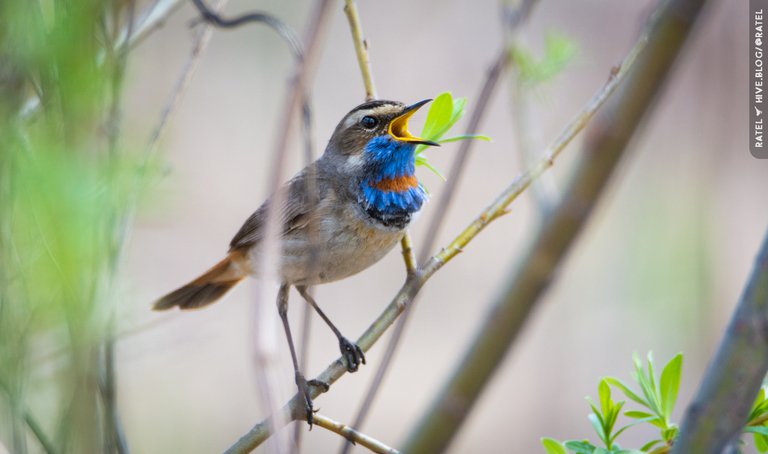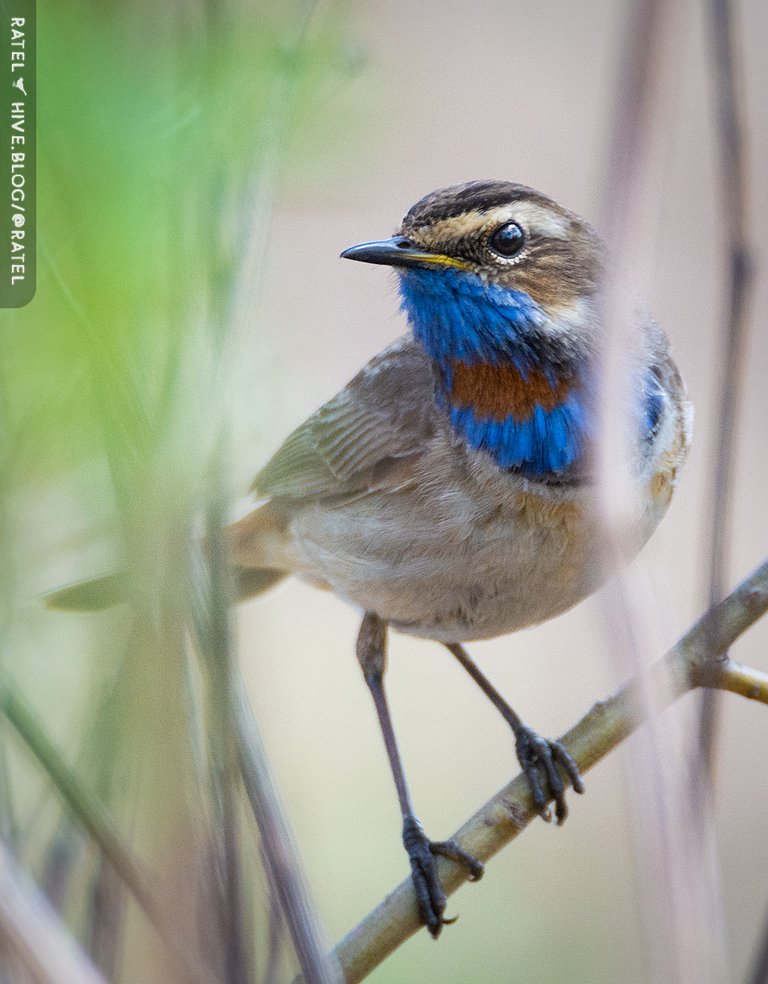
🦉 The bluethroat (Luscinia svecica)
- Luscinia (lat.) Nightingale
- svecica suecicus (lat.) Swedish; the name svecica, according to the history of the description, is not a toponym, but is given for the color of the male's chest:
Olof Rudbeck junior, Swedish botanist and birdwatcher, mentor to Carl Linnaeus, having discovered the bluethroat in 1695 in Lapland, he gave it the name Avis Carolina in honor of the Swedish king Charles XI and the blue-yellow Swedish flag (in those days the yellow color on the flag was more reddish), and K. Linnaeus in 1758, when the absolute power of the monarchy in Sweden was no longer, considered the name svecica more correct than carolina (Jobling, 2010)

I met this beautiful, colorful, elegant nightingale in the bushes in the meadow. Near these bushes there was a small lake that was formed by rains and melting snow. It is precisely such places that attract this type of bird. You will not meet them in forests, only in places where bushes are dense.

Since it was spring, it was, of course, the mating season for the birds. And this male was singing a mating song. However, he did not fly up demonstratively, most likely he already had a female, and he was guarding his territory.

| Camera | Lens |
|---|---|
| Nikon D5200 | Tamron SP AF 150-600mm f/5-6.3 Di VC USD |


